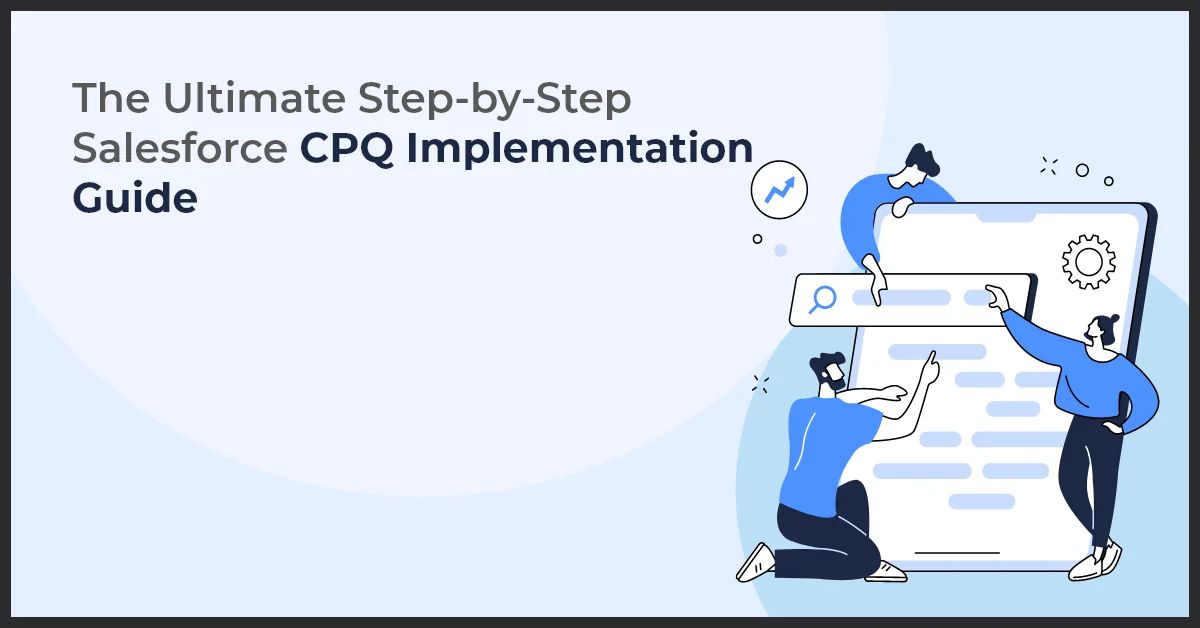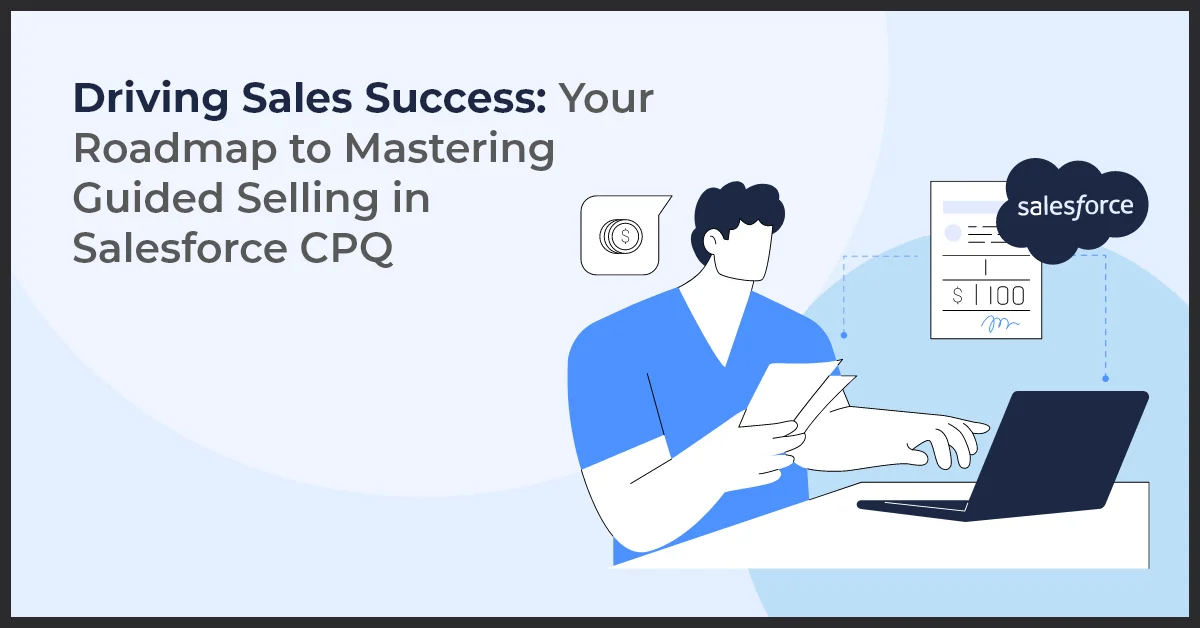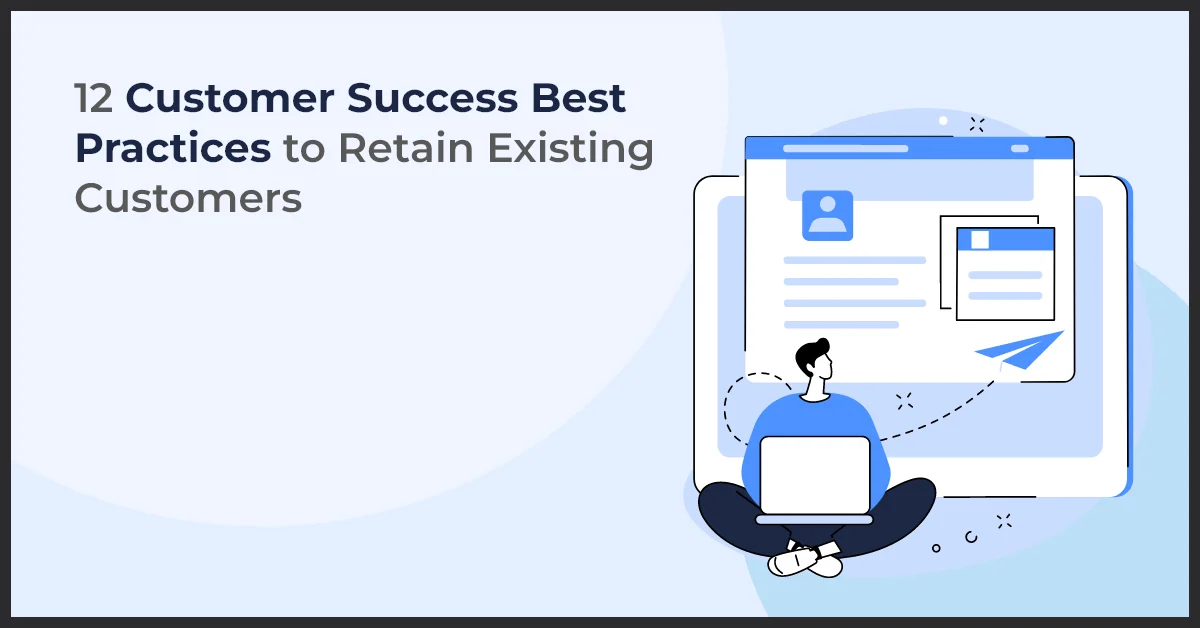The Ultimate Step-by-Step Salesforce CPQ Implementation Guide

Published on: January 18, 2022
Updated on: June 27, 2024
797 Views
- Salesforce CPQ
5 min read
Setting the correct prices for products is often a complex task. A single product can have multiple variants resulting in higher prices for more advanced models. For example, a smartphone can have different RAM and memory configurations, processors, and cameras, with each feature adding to the product's price.
The whole pricing process becomes even more complicated in a B2B market where you deal with daily bulk orders. You can continue to work on pricing and order aggregation manually, or you can implement CPQ to deliver tailor-made quotes to your customers instantly.
Salesforce CPQ (Configure, Price, Quote) is a sales cloud tool that helps businesses generate accurate sales quotes and remove any redundancies in the existing process.
The primary goal of implementing Salesforce CPQ is to generate error-free quotes that are personalized to a customer’s requirements.
Some factors that affect the pricing include:
- Volume discounts
- Exclusive promotions
- Bundle offers
- Limited-time deals
- Price slab–based discounts
However, one common concern when implementing Salesforce CPQ is that it takes a long time to work seamlessly with existing systems. But in the following lines, we will shed light on how you can implement Salesforce CPQ into your system in a matter of weeks and not months.
The following steps will ensure that a Salesforce CPQ implementation is rolled out efficiently. Also, we will take a look at how Salesforce CPQ implementation drives more engagement while also improving the productivity of your sales teams.
Step-by-Step Salesforce CPQ Implementation Guide
Step 1: Set Goals
Create measurable goals behind your Salesforce CPQ implementation.
Some of the most notable KPIs that companies aim to improve include:
- Reduce selling time
- Decrease the turnaround time for quotations
- Increase the average order value
- Generate error-free quotes
- Increase renewal orders
- Increase the win rate
Once you have a clear idea about what your sales process needs, you can get a clear timeline for the implementation based on your goals.
Step 2: Document and Optimize Quote Generation Process
Take your business’ unique requirements under consideration and document the quote generation and approval process. Then, use this information to design a Salesforce CPQ workflow prior to implementation.
Combine the workflows with the existing product portfolio. Clearly define the current number of SKUs, any value-added services on offer, discounts, pricing, and terms of payments to form the very core of your Salesforce CPQ implementation.
Having tailor-made rules in your Salesforce CPQ ensures that your sales teams can offer the best deals to your customers and increase your chances of upselling more products in the near future.
Step 3: Funnel the CPQ Features You Need
Salesforce CPQ can be very complicated, and the sheer number of features is enough to overwhelm users if they attempt to use them all at once. However, once you have a clear idea of your goals, you can prioritize the features based on the set goals for your business.
The best way to go about it is by starting with the out-of-the-box features, as they are enough to meet high-value business requirements. Once you get the hang of these features, you can always add more functionalities to your Salesforce CPQ from a comprehensive list of features as and when required.
Step 4: Initiate the Implementation Process
After setting the pricing models and product catalogs, you should turn your attention to data management. CPQ primarily functions on data collected from different documents and systems. To successfully implement it, you need to take care of the following:
- Where the data will be sourced for the CPQ process, you can get customers’ data from existing CRM and input other details like price tiers, bundle pricing, discounts, tax rates, and existing templates into the CPQ process using offline sources.
- Check for the quality and accuracy of data before proceeding with Salesforce CPQ implementation.
- Ensure that the data to be used is up-to-date and represents information in real-time as any data entered needs to be updated quickly to avoid losing any potential sales opportunities.
- Have the owners of master data held accountable for keeping the data error-free so that the Salesforce CPQ can integrate seamlessly with ERPs using different API integrations.
Pro Tip: It is always better to test the implementation in a sandbox environment to flush out any bugs before moving on to live status.
Step 5: Measure the Progress
The only way to determine if the Salesforce CPQ implementation is successful is to measure the progress continuously. You can use user satisfaction surveys to quantify if the implementation helped in improving the following parameters:
- Tool’s ease of use
- The improved time frame for user onboarding
- Effect on responsiveness to prospective clients
Use the results to track the overall engagement with users and find out if the Salesforce CPQ functionalities have positively impacted the areas you were struggling with. Once you clearly understand the changes, you can use the information to optimize your CPQ process even further and bridge any adoption gaps.
Implement Salesforce CPQ in a Matter of Weeks, Starting Today!
Growth Natives offers state-of-the-art Salesforce CPQ implementation and development services to major heavy-weight companies across different industries.
Our experts understand that it will be a significant learning curve when you implement Salesforce CPQ for the first time. That is why we facilitate quick implementation and help your in-house teams familiarize themselves with the usability of the implementation.
Want to know how you can implement the complex Salesforce CPQ quickly? Get in touch with our experts today or email us at info@growthnatives.com
Frequently Asked Questions
Implementing Salesforce CPQ can lead to several benefits, including faster quote generation, reduced errors in pricing and configuration, improved sales productivity, better visibility into sales performance, enhanced collaboration between sales and operations teams, and increased revenue through upselling and cross-selling opportunities.
Salesforce CPQ improves sales performance by automating the quoting process, reducing errors, providing accurate pricing and configurations, and enabling sales teams to respond to customer inquiries more quickly and efficiently.
Customizations may include creating custom product bundles, setting up complex pricing rules, designing quote templates, and integrating with other business systems.
The implementation timeline varies based on the complexity of the project, the size of the product catalog, and the level of customization required. A typical implementation can take anywhere from a few weeks to several months.
The success of a Salesforce CPQ implementation can be measured through key performance indicators (KPIs) such as quote turnaround time, win rates, quote accuracy, sales velocity, and customer satisfaction. Regularly track these metrics and compare them against pre-implementation benchmarks to assess the impact of Salesforce CPQ on your sales processes.



